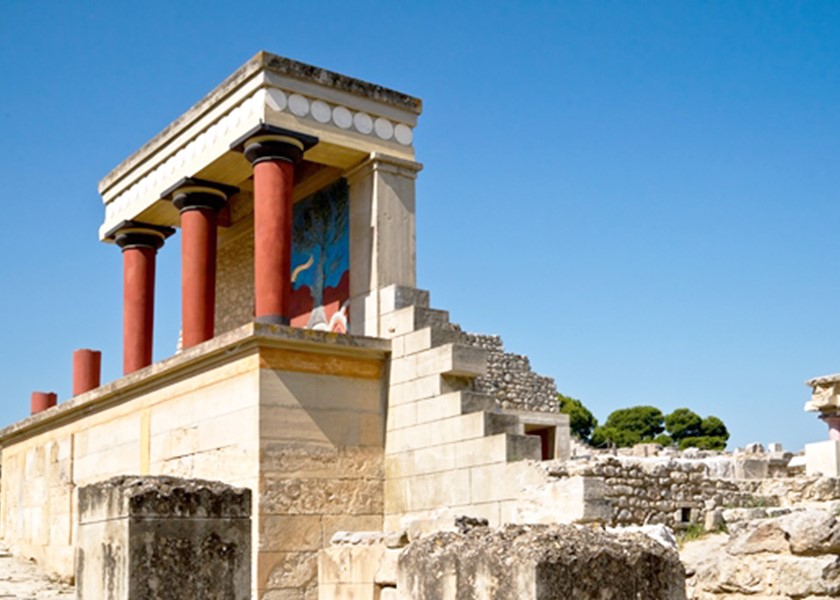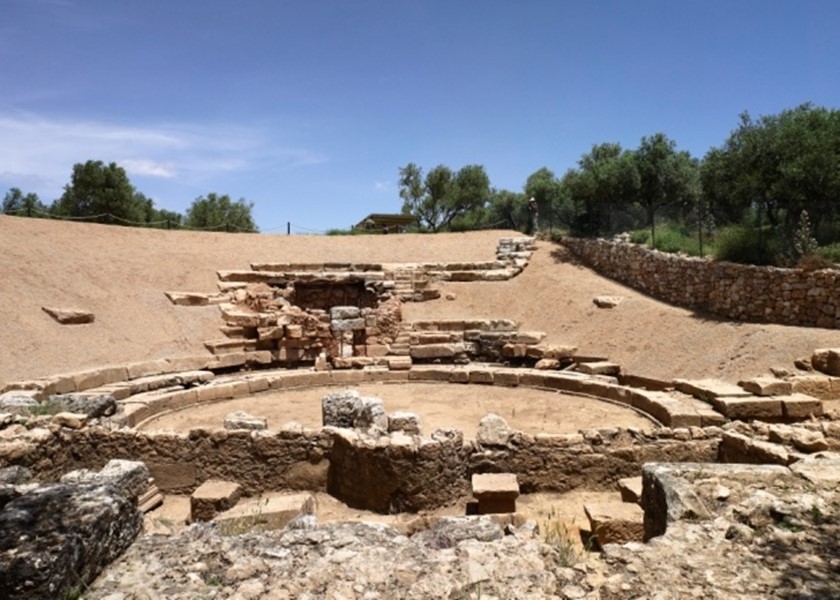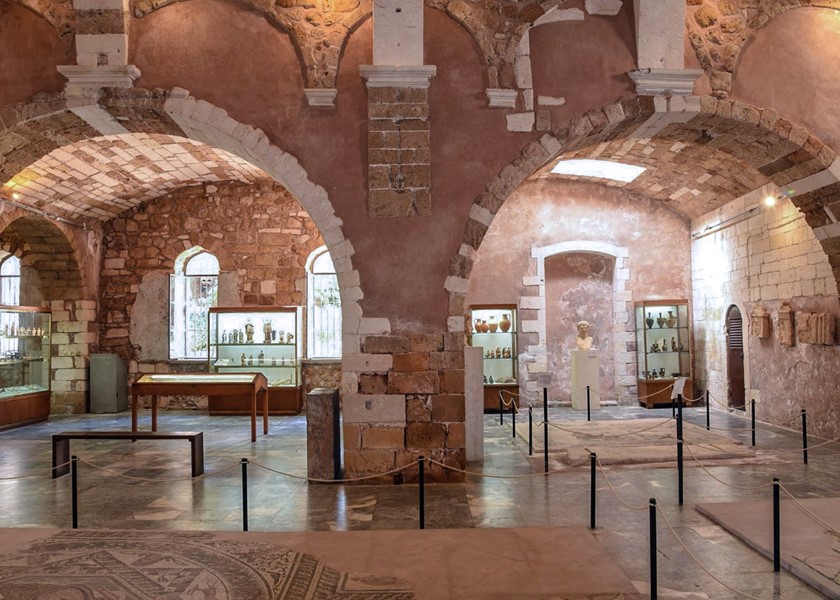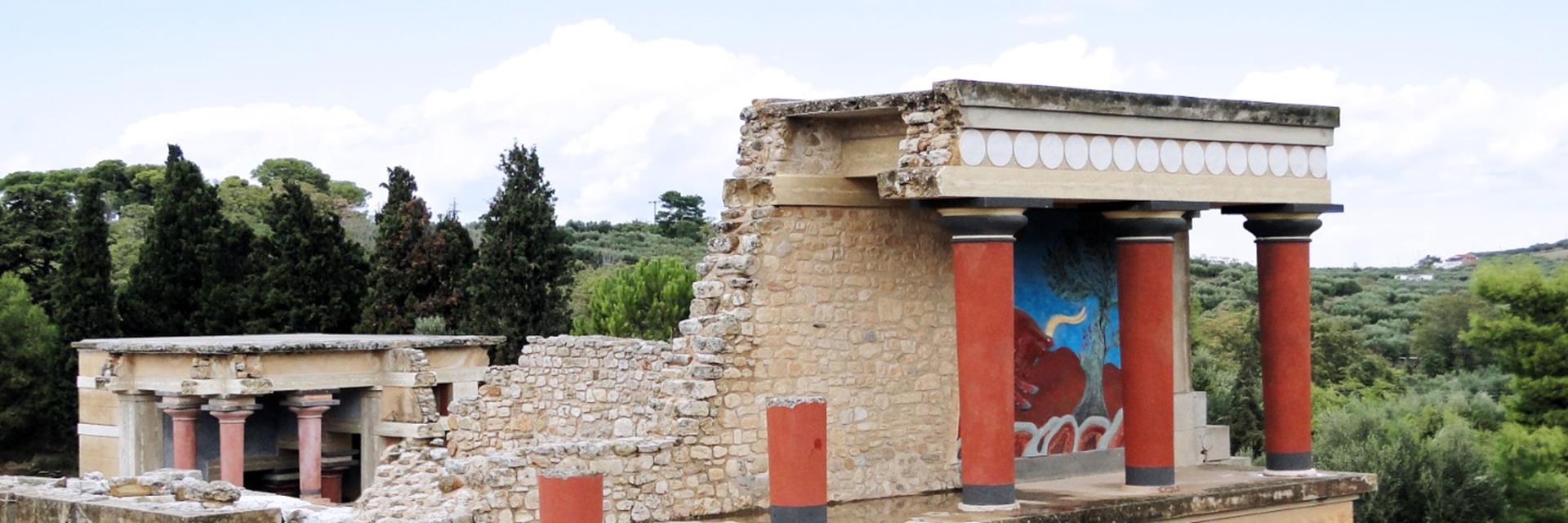Archaeological sites & Museums
Get access to extended travel tips and useful information upon arrival...
-

Knossos
Knossos is the site of the most important and better known palace of Minoan civilization. According to tradition, it was the seat of the legendary king Minos. The Palace is also connected with thrilling legends, such as the myth of the Labyrinth with the Minotaur, and the story of Daidalos and Icaros.
The site was continuously inhabited from the Neolithic period (7000-3000 B.C.) until Roman times.
The Linear B tablets (Mycenaean script) of the 14th century B.C. mention the city as Ko-no-so.
Knossos was discovered in 1878 by Minos Kalokairinos. Arthur Evans conducted systematic excavations at the site between 1900 and 1931, bringing to light the palace, a large section of the Minoan city, and the cemeteries. -

Ancient Aptera
One of the most interesting archaeological sites in western Crete, Aptera was founded in the Geometric period.
It reached a peak in the Hellenistic period, with intense commercial and political activity. In the Roman period, the town had a more rural character.Its location above the bay of Souda was also strategically important: close to its two seaports Minoa (today's Marathi) and Kasteli (near Kalyves) Aptera could control the circulation of ships and it became a very important trading post in Crete and one of the greatest cities on the island.
Aptera was destroyed in the great earthquake of 365 AD and only sparsely inhabited afterwards but a Late Byzantine monastery dedicated to Hagios Ioannes Theologos (St. John the Theologian) remained amidst the ruins. -

Archaeological Museum of Chania
The Archaeological Museum of Chania has been housed in the church of the Venetian Monastery of St Francis since 1963.
The exhibits illustrate the cultural history and character of the area through the ages, from the Neolithic period to the Roman era. The findings are presented in excavation groups and thematic units from the Late Neolithic period, the Bronze Age (Minoan era) and the Iron Age (Historic era).
Contact Details
-
Orpheas Resort
- Kavros, Gergiopoupolis, 73007, Crete, Greece
- Tel: +30 28250 61218
- Fax: +30 28250 61007
- Email: info@orpheas-resort.gr
- ΜΗ.Τ.Ε. 1042K014A0172200








Connect With Us